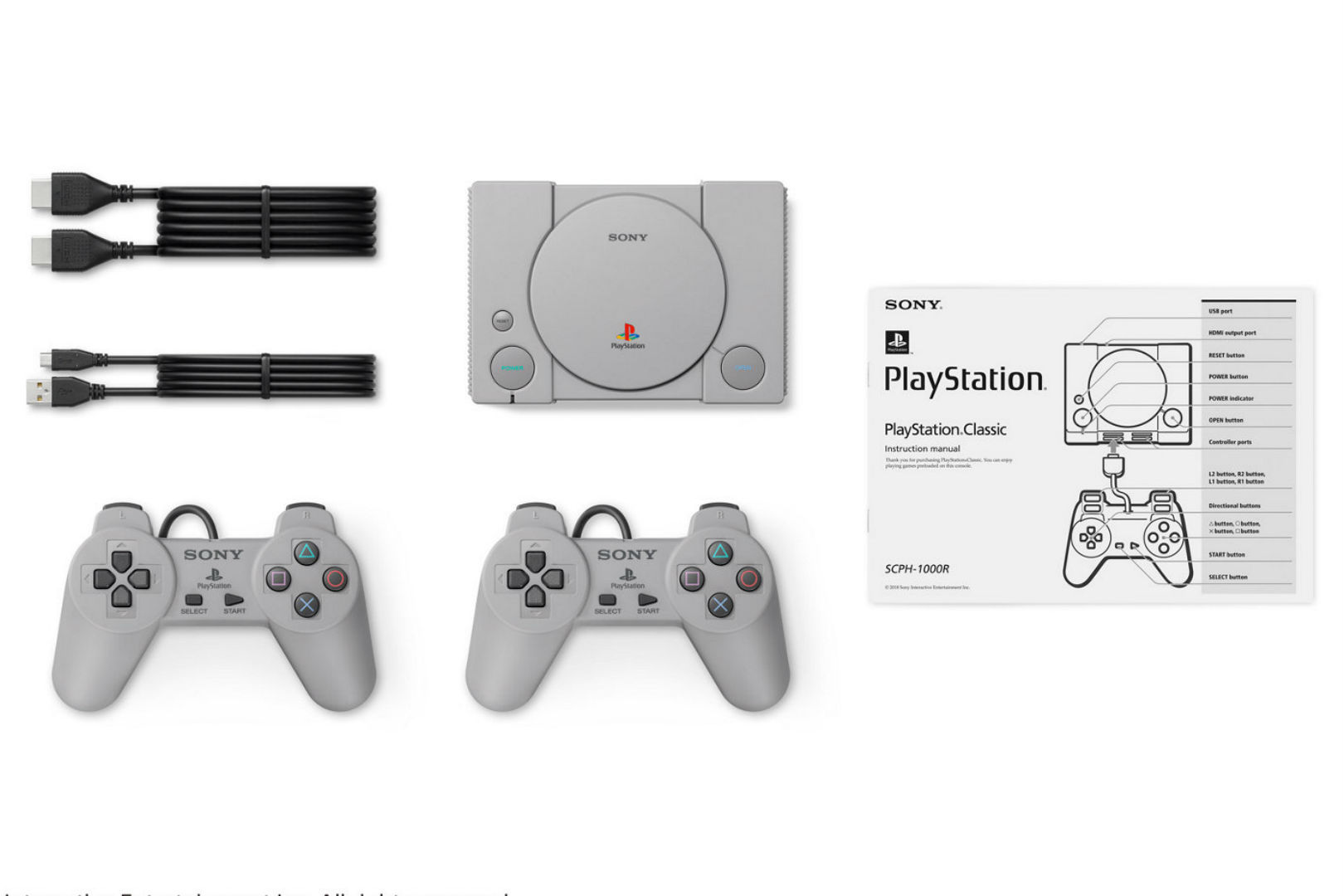The PlayStation Classic doesn’t just play the games, it captures the essence of the '90s
The PlayStation Classic is as much a time capsule as it is a way to replay old games

There’s something very satisfying about just looking at the PlayStation Classic; its chunky corners, lines and ridges playing with the big circles of its buttons and (fake) disk hatch. As an ornament alone Sony’s tiny reissued PS1 hits very specific pleasure centers in the brain. It’s a like a piece of visual ASMR.
But of course this actually works, and that’s when the nostalgia really flares up - both from clicking in that big, round button to from the ominous synthy chords that roll over a few little twinkly noises as that weird old Sony trademark you sort of remember fills the screen.

The presentation, then, is flawless. Before I’ve even picked up a one of the pads I’m having flashbacks to an almost entirely different life from nearly 20 years ago - a terrible, wobbly shelf unit my 14-inch portable TV and PS1 sat on that I’d completely forgotten about; alternating between playing MGS and Resident Evil 2. Marvelling at what, at the time, was the ‘oh my God I can’t believe what I’m seeing’ FMV intro of Resi 2, or losing my shit when realising Metal Gear Solid was asking me to look on the game box to find a codex frequency.
Okay, I’m going off on a tangent here but for all the sales records or huge ongoing franchises the original PlayStation gave us, or the way it shifted gaming into a more mainstream, adult perception, this thing basically exists because everyone has memories like that. A living room, a bedroom, an argument over whose go it was. You’re thinking about a specific game right now aren’t you?
The real question is: can you go back?
Reload original save?
Based on the few hours I got to play with the PlayStation Classic at Sony’s London HQ the answer is a resounding Oh Hell Yes. While I only really had time to play around half the 20 games on offer, the tiny console plays like a time capsule of late 90s gaming. And it’s not just because of the games themselves - flipping between titles like Jumping Flash or Cool Boarders 2, or playing Syphon Filter, GTA, Tekken 3 and so on, gives you a sense of the very texture of gaming at the time. From GTA’s crackling 16-bit audio samples, to Cool Boarders 2’s almost abusive record scratch selection noises as you move between menu options, and the way the PlayStation’s imprecise 3D rendering makes characters and shapes wobble slightly - the PlayStation Classic doesn’t just play the games, it captures the essence of what games were at the time.

There’s a pleasingly slick minimalism to the presentation of it all. Once it’s powered up, the surprisingly light, analogue-stick-free controller lets you cycle through a literal carousel of what’s on offer. What stands out for you will depend on your favourites. I was always more a Metal Gear, Syphon Filter, Resi kind of guy so those are my go-tos, but there’s a good range for all tastes with Final Fantasy 7 and Revelations: Persona, Tekken 3, Destruction Derby, Ridge Racer 4, Mr Driller, Super Street Fighter Puzzle Fighter 2 Turbo and more.
Sign up to the GamesRadar+ Newsletter
Weekly digests, tales from the communities you love, and more
Each one is perfectly preserved, with no enhancements. So GTA’s 2D engine still creaks a touch to create its top down illusion; the wobbly 3D rendering still wobbles, and the audio still crackles - and none of this is a negative. It’s exactly how the games were at the time and getting 20 of them on your TV playing perfectly from a box not much bigger than your phone is nothing short of a marvel.

The old 4:3 aspect ratios are preserved, so there are large black side borders now on modern TVs but that’s what the games looked like at the time and the 720p output looks surprisingly crisp on a 4K screen. The games run in their raw unadulterated original format without any post processing tweaks to blur or soften edges, so while it comes as a shock to be reminded how much of a pixely mess the characters were in the original GTA, for example, they are a sharp and beautifully defined pixely mess. Bless ‘em.
Press X to continue
That pure experience runs to things like the controls. Some old (mainly Japanese) games use circle to select menu options rather than the now established X, meaning it’ll probably take you a few goes to successfully get through MGS’ menu and start the game, while GTA uses tank controls as you rotate the character with the D-pad and press X to run - I had completely forgotten about that. The PS1 days were a wild and lawless time for control schemes, with some devs apparently making choices via names in a hat, dice rolls or possibly chicken entrails. Syphon Filter, a third person action game, has strafing on the shoulder buttons fer Chrissakes, and an inverted aim with no option to change it. Back in the day I played it all effortless because every PS1 game came with a unique control scheme to learn and you just got on with it. Going back now almost feels like being gaslighted, as buttons whose role we now take for granted perform all sort of arcane and random functions.

You get used to it though, and even the ‘wait, that the fire button?!’ process of relearning how to play is all part of the enjoyment of going back. Even the fact that multi disk games use the PS1’s open button to change the virtual disks is a lovely touch. The disk tray doesn’t actually open, obviously, but it’s great to lean over and hammer it all the same. There are virtual memory cards as well to organise your progress and, again, I forgot how savage checkpoints were back in the day. A couple of times I went looking for save options in the menus, before remembering there’s a solitary save point to find somewhere around 45 minutes in and a quick trip back to the title screen if you die before then. There is at least one concession to the future here though, a sort of single slot sleep mode save that preserves one game, ready to pick up exactly where you left off. It’s a perfect way to make a more pick up and play experience.
Do Not Underestimate The Power Of PlayStation
The PlayStation Classic feels like a lovingly crafted tribute to the time, the games and the ethos of 90s video gaming. A time when saying ‘and it plays CDs’ would draw admiring ‘Ooooohs’ from friends as you popped in Alanis Morissette’s Jagged Little Pill and pressed X on the DualShock. I’m excited to go back and play some of the games in as an original a format as you’ll get short of buying up all the old gear again. There’s even some games I missed at the time I’m interested in trying - I’ve never really been a Persona person but I’m curious see where it all begin. I also clicked surprisingly well with Battle Arena Toshinden’s simple but satisfying combat. It’s a game I barely heard of at the time but now have a sudden urge to challenge people to.
From what I’ve played, the PlayStation Classic is a lovely little thing. With a great spread of varied games there’s likely a good, solid choice of things to please most palates, and an interesting enough cross section to mean there are no fillers. Combine that with the perfectly recreated experience of using the original hardware and you’ve got a playable slice of history.

I'm GamesRadar's Managing Editor for guides, which means I run GamesRadar's guides and tips content. I also write reviews, previews and features, largely about horror, action adventure, FPS and open world games. I previously worked on Kotaku, and the Official PlayStation Magazine and website.


